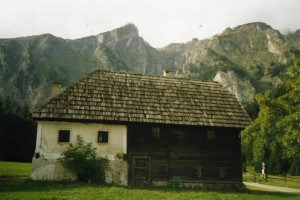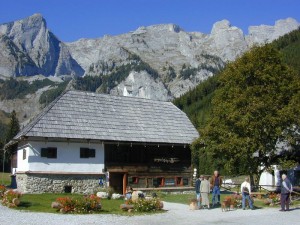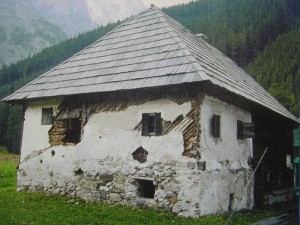[fusion_builder_container hundred_percent=“yes“ overflow=“visible“ padding_right=“20px“ padding_left=“20px“ ][fusion_builder_row][fusion_builder_column type=“1_1″ background_position=“left top“ background_color=““ border_size=““ border_color=““ border_style=“solid“ spacing=“yes“ background_image=““ background_repeat=“no-repeat“ padding=““ margin_top=“0px“ margin_bottom=“0px“ class=““ id=““ animation_type=““ animation_speed=“0.3″ animation_direction=“left“ hide_on_mobile=“no“ center_content=“no“ min_height=“none“]
[/fusion_builder_column][/fusion_builder_row][/fusion_builder_container][fusion_builder_container background_color=““ background_image=““ background_parallax=“none“ enable_mobile=“no“ parallax_speed=“0.3″ background_repeat=“no-repeat“ background_position=“left top“ video_url=““ video_aspect_ratio=“16:9″ video_webm=““ video_mp4=““ video_ogv=““ video_preview_image=““ overlay_color=““ overlay_opacity=“0.5″ video_mute=“yes“ video_loop=“yes“ fade=“no“ border_size=“0px“ border_color=““ border_style=“solid“ padding_top=“40″ padding_bottom=“20″ padding_left=““ padding_right=““ hundred_percent=“no“ equal_height_columns=“no“ hide_on_mobile=“no“ menu_anchor=““ class=““ id=““][fusion_builder_row][fusion_builder_column type=“1_1″ background_position=“left top“ background_color=““ border_size=““ border_color=““ border_style=“solid“ spacing=“yes“ background_image=““ background_repeat=“no-repeat“ padding=““ margin_top=“0px“ margin_bottom=“0px“ class=““ id=““ animation_type=““ animation_speed=“0.3″ animation_direction=“left“ hide_on_mobile=“no“ center_content=“no“ min_height=“none“][fusion_text]Bodenbauerkeusche – viel mehr als ein Beiwerk
Sie hat ein stattliches Alter, auf das sie stolz sein kann. Keuschheit ist hier fehl am Platz. Das Geburtsjahr der Bodenbauerkeusche liegt um 1700. Ein Kaufbrief-Protokoll vom 25.5.1713 dient als erster schriftlicher Beweis ihrer Existenz. Seit 1992 ist sie im Besitz der ZWHS, so wie „der Bodenbauer“ selbst. 1997 wurde die Keusche von DI Alois Murnig vom Bundesdenkmalamt besichtigt. Seitdem zählt sie zum Typus „Bauernhaus/Rauchstubenhaus mit traufeseitigem Eingang“. Dieser bäuerliche Haustyp ist kulturgeschichtlich bemerkenswert – nicht nur in diesem Kontext glänzt er durch hochwertige Details der Gebäudestruktur.[/fusion_text][/fusion_builder_column][/fusion_builder_row][/fusion_builder_container][fusion_builder_container background_color=““ background_image=““ background_parallax=“none“ enable_mobile=“no“ parallax_speed=“0.3″ background_repeat=“no-repeat“ background_position=“left top“ video_url=““ video_aspect_ratio=“16:9″ video_webm=““ video_mp4=““ video_ogv=““ video_preview_image=““ overlay_color=““ overlay_opacity=“0.5″ video_mute=“yes“ video_loop=“yes“ fade=“no“ border_size=“0px“ border_color=““ border_style=““ padding_top=“20″ padding_bottom=“20″ padding_left=““ padding_right=““ hundred_percent=“no“ equal_height_columns=“no“ hide_on_mobile=“no“ menu_anchor=““ class=““ id=““][fusion_builder_row][fusion_builder_column type=“1_1″ background_position=“left top“ background_color=““ border_size=““ border_color=““ border_style=“solid“ spacing=“yes“ background_image=““ background_repeat=“no-repeat“ padding=““ margin_top=“0px“ margin_bottom=“0px“ class=““ id=““ animation_type=““ animation_speed=“0.3″ animation_direction=“left“ hide_on_mobile=“no“ center_content=“no“ min_height=“none“][fusion_text]
Hochschwabmuseum – ein steirisches Wahrzeichen
Die Keusche hat sich zum Hochschabmuseum gewandelt und ist beliebter Kultur-Stopp auf dem Weg in die Berge, zum Panoramaweg oder zum Alpengasthof „der Bodenbauer“. Als „steirisches Wahrzeichen“ hat sie im Jahr 1999 ihren Platz im Revitalisierungs-Sonderprogramm für historisch bedeutende Baudenkmäler gefunden.
2002 wurde die Keusche generalsaniert und ab 2003 nachhaltig als Hochschwabmuseum genutzt. Die ZWHS mit St. Ilgen/Thörl und dem Verein Hochschwabmuseum präsentieren seitdem gemeinsam das Thema der Trinkwasserversorgung und die Ergebnisse der Hochschwabforschung zu den Bereichen Wasser, Almwirtschaft und touristische Erschließung für die Zukunft.[/fusion_text][/fusion_builder_column][/fusion_builder_row][/fusion_builder_container][fusion_builder_container background_color=““ background_image=““ background_parallax=“none“ enable_mobile=“no“ parallax_speed=“0.3″ background_repeat=“no-repeat“ background_position=“left top“ video_url=““ video_aspect_ratio=“16:9″ video_webm=““ video_mp4=““ video_ogv=““ video_preview_image=““ overlay_color=““ overlay_opacity=“0.5″ video_mute=“yes“ video_loop=“yes“ fade=“no“ border_size=“0px“ border_color=““ border_style=““ padding_top=“20″ padding_bottom=“20″ padding_left=““ padding_right=““ hundred_percent=“no“ equal_height_columns=“no“ hide_on_mobile=“no“ menu_anchor=““ class=““ id=““][fusion_builder_row][fusion_builder_column type=“1_3″ last=“no“ spacing=“yes“ center_content=“no“ hide_on_mobile=“no“ background_color=““ background_image=““ background_repeat=“no-repeat“ background_position=“left top“ hover_type=“none“ link=““ border_position=“all“ border_size=“0px“ border_color=““ border_style=““ padding=““ margin_top=““ margin_bottom=““ animation_type=““ animation_direction=““ animation_speed=“0.1″ animation_offset=““ class=““ id=““][fusion_imageframe lightbox=“yes“ lightbox_image=“http://www.hochschwabmuseum.at/wp-content/uploads/2016/03/keusche02.jpg“ style_type=“none“ hover_type=“none“ bordercolor=““ bordersize=“0px“ borderradius=“0″ stylecolor=““ align=“none“ link=““ linktarget=“_self“ animation_type=“0″ animation_direction=“down“ animation_speed=“0.1″ animation_offset=““ hide_on_mobile=“no“ class=““ id=““]  [/fusion_imageframe][/fusion_builder_column][fusion_builder_column type=“1_3″ last=“no“ spacing=“yes“ center_content=“no“ hide_on_mobile=“no“ background_color=““ background_image=““ background_repeat=“no-repeat“ background_position=“left top“ hover_type=“none“ link=““ border_position=“all“ border_size=“0px“ border_color=““ border_style=““ padding=““ margin_top=““ margin_bottom=““ animation_type=““ animation_direction=““ animation_speed=“0.1″ animation_offset=““ class=““ id=““][fusion_imageframe lightbox=“yes“ lightbox_image=“http://www.hochschwabmuseum.at/wp-content/uploads/2016/03/keusche04.jpg“ style_type=“none“ hover_type=“none“ bordercolor=““ bordersize=“0px“ borderradius=“0″ stylecolor=““ align=“none“ link=““ linktarget=“_self“ animation_type=“0″ animation_direction=“down“ animation_speed=“0.1″ animation_offset=““ hide_on_mobile=“no“ class=““ id=““]
[/fusion_imageframe][/fusion_builder_column][fusion_builder_column type=“1_3″ last=“no“ spacing=“yes“ center_content=“no“ hide_on_mobile=“no“ background_color=““ background_image=““ background_repeat=“no-repeat“ background_position=“left top“ hover_type=“none“ link=““ border_position=“all“ border_size=“0px“ border_color=““ border_style=““ padding=““ margin_top=““ margin_bottom=““ animation_type=““ animation_direction=““ animation_speed=“0.1″ animation_offset=““ class=““ id=““][fusion_imageframe lightbox=“yes“ lightbox_image=“http://www.hochschwabmuseum.at/wp-content/uploads/2016/03/keusche04.jpg“ style_type=“none“ hover_type=“none“ bordercolor=““ bordersize=“0px“ borderradius=“0″ stylecolor=““ align=“none“ link=““ linktarget=“_self“ animation_type=“0″ animation_direction=“down“ animation_speed=“0.1″ animation_offset=““ hide_on_mobile=“no“ class=““ id=““]  [/fusion_imageframe][/fusion_builder_column][fusion_builder_column type=“1_3″ last=“yes“ spacing=“yes“ center_content=“no“ hide_on_mobile=“no“ background_color=““ background_image=““ background_repeat=“no-repeat“ background_position=“left top“ hover_type=“none“ link=““ border_position=“all“ border_size=“0px“ border_color=““ border_style=““ padding=““ margin_top=““ margin_bottom=““ animation_type=““ animation_direction=““ animation_speed=“0.1″ animation_offset=““ class=““ id=““][fusion_imageframe lightbox=“yes“ lightbox_image=“http://www.hochschwabmuseum.at/wp-content/uploads/2016/03/keusche03.jpg“ style_type=“none“ hover_type=“none“ bordercolor=““ bordersize=“0px“ borderradius=“0″ stylecolor=““ align=“none“ link=““ linktarget=“_self“ animation_type=“0″ animation_direction=“down“ animation_speed=“0.1″ animation_offset=““ hide_on_mobile=“no“ class=““ id=““]
[/fusion_imageframe][/fusion_builder_column][fusion_builder_column type=“1_3″ last=“yes“ spacing=“yes“ center_content=“no“ hide_on_mobile=“no“ background_color=““ background_image=““ background_repeat=“no-repeat“ background_position=“left top“ hover_type=“none“ link=““ border_position=“all“ border_size=“0px“ border_color=““ border_style=““ padding=““ margin_top=““ margin_bottom=““ animation_type=““ animation_direction=““ animation_speed=“0.1″ animation_offset=““ class=““ id=““][fusion_imageframe lightbox=“yes“ lightbox_image=“http://www.hochschwabmuseum.at/wp-content/uploads/2016/03/keusche03.jpg“ style_type=“none“ hover_type=“none“ bordercolor=““ bordersize=“0px“ borderradius=“0″ stylecolor=““ align=“none“ link=““ linktarget=“_self“ animation_type=“0″ animation_direction=“down“ animation_speed=“0.1″ animation_offset=““ hide_on_mobile=“no“ class=““ id=““]  [/fusion_imageframe][/fusion_builder_column][/fusion_builder_row][/fusion_builder_container][fusion_builder_container background_color=““ background_image=““ background_parallax=“none“ enable_mobile=“no“ parallax_speed=“0.3″ background_repeat=“no-repeat“ background_position=“left top“ video_url=““ video_aspect_ratio=“16:9″ video_webm=““ video_mp4=““ video_ogv=““ video_preview_image=““ overlay_color=““ overlay_opacity=“0.5″ video_mute=“yes“ video_loop=“yes“ fade=“no“ border_size=“0px“ border_color=““ border_style=“solid“ padding_top=“20″ padding_bottom=“20″ padding_left=““ padding_right=““ hundred_percent=“no“ equal_height_columns=“yes“ hide_on_mobile=“no“ menu_anchor=““ class=““ id=““][fusion_builder_row][fusion_builder_column type=“1_3″ last=“no“ spacing=“yes“ center_content=“yes“ hide_on_mobile=“no“ background_color=““ background_image=““ background_repeat=“no-repeat“ background_position=“left top“ hover_type=“none“ link=““ border_position=“all“ border_size=“0px“ border_color=““ border_style=“solid“ padding=““ margin_top=““ margin_bottom=““ animation_type=“0″ animation_direction=“down“ animation_speed=“0.1″ animation_offset=““ class=““ id=““][fusion_text]
[/fusion_imageframe][/fusion_builder_column][/fusion_builder_row][/fusion_builder_container][fusion_builder_container background_color=““ background_image=““ background_parallax=“none“ enable_mobile=“no“ parallax_speed=“0.3″ background_repeat=“no-repeat“ background_position=“left top“ video_url=““ video_aspect_ratio=“16:9″ video_webm=““ video_mp4=““ video_ogv=““ video_preview_image=““ overlay_color=““ overlay_opacity=“0.5″ video_mute=“yes“ video_loop=“yes“ fade=“no“ border_size=“0px“ border_color=““ border_style=“solid“ padding_top=“20″ padding_bottom=“20″ padding_left=““ padding_right=““ hundred_percent=“no“ equal_height_columns=“yes“ hide_on_mobile=“no“ menu_anchor=““ class=““ id=““][fusion_builder_row][fusion_builder_column type=“1_3″ last=“no“ spacing=“yes“ center_content=“yes“ hide_on_mobile=“no“ background_color=““ background_image=““ background_repeat=“no-repeat“ background_position=“left top“ hover_type=“none“ link=““ border_position=“all“ border_size=“0px“ border_color=““ border_style=“solid“ padding=““ margin_top=““ margin_bottom=““ animation_type=“0″ animation_direction=“down“ animation_speed=“0.1″ animation_offset=““ class=““ id=““][fusion_text]
2014
[/fusion_text][/fusion_builder_column][fusion_builder_column type=“2_3″ last=“yes“ spacing=“yes“ center_content=“yes“ hide_on_mobile=“no“ background_color=““ background_image=““ background_repeat=“no-repeat“ background_position=“left top“ hover_type=“none“ link=““ border_position=“all“ border_size=“0px“ border_color=““ border_style=“solid“ padding=““ margin_top=““ margin_bottom=““ animation_type=“0″ animation_direction=“down“ animation_speed=“0.1″ animation_offset=““ class=““ id=““][fusion_text]
Schatzkammer Hochschwab
Wasserschatz – Kulturschatz – Naturschatz
Der Wasserschatz des Hochschwab
Prof. Paul Kassecker – der vielseitige Künstler
Mineralienausstellung vom „Stoasuacher“ aus Jauring[/fusion_text][/fusion_builder_column][/fusion_builder_row][/fusion_builder_container][fusion_builder_container background_color=““ background_image=““ background_parallax=“none“ enable_mobile=“no“ parallax_speed=“0.3″ background_repeat=“no-repeat“ background_position=“left top“ video_url=““ video_aspect_ratio=“16:9″ video_webm=““ video_mp4=““ video_ogv=““ video_preview_image=““ overlay_color=““ overlay_opacity=“0.5″ video_mute=“yes“ video_loop=“yes“ fade=“no“ border_size=“0px“ border_color=““ border_style=“solid“ padding_top=“20″ padding_bottom=“20″ padding_left=““ padding_right=““ hundred_percent=“no“ equal_height_columns=“yes“ hide_on_mobile=“no“ menu_anchor=““ class=““ id=““][fusion_builder_row][fusion_builder_column type=“1_3″ last=“no“ spacing=“yes“ center_content=“yes“ hide_on_mobile=“no“ background_color=““ background_image=““ background_repeat=“no-repeat“ background_position=“left top“ hover_type=“none“ link=““ border_position=“all“ border_size=“0px“ border_color=““ border_style=“solid“ padding=““ margin_top=““ margin_bottom=““ animation_type=“0″ animation_direction=“down“ animation_speed=“0.1″ animation_offset=““ class=““ id=““][fusion_text]
2013
[/fusion_text][/fusion_builder_column][fusion_builder_column type=“2_3″ last=“yes“ spacing=“yes“ center_content=“yes“ hide_on_mobile=“no“ background_color=““ background_image=““ background_repeat=“no-repeat“ background_position=“left top“ hover_type=“none“ link=““ border_position=“all“ border_size=“0px“ border_color=““ border_style=“solid“ padding=““ margin_top=““ margin_bottom=““ animation_type=“0″ animation_direction=“down“ animation_speed=“0.1″ animation_offset=““ class=““ id=““][fusion_text]
Schatzkammer Hochschwab
Wasserschatz – Kulturschatz – Naturschatz
20 Jahre Trinkwasserversorgungsbetrieb ZWHS
110 Jahre Hochschwabmaler Prof. Paul Kassecker
125 Jahre Alpengasthof Bodenbauer
155 Jahre „Büchsenmacher Rosl“
40 Jahre Wasserschon- und Widmungsgebiet[/fusion_text][/fusion_builder_column][/fusion_builder_row][/fusion_builder_container][fusion_builder_container background_color=““ background_image=““ background_parallax=“none“ enable_mobile=“no“ parallax_speed=“0.3″ background_repeat=“no-repeat“ background_position=“left top“ video_url=““ video_aspect_ratio=“16:9″ video_webm=““ video_mp4=““ video_ogv=““ video_preview_image=““ overlay_color=““ overlay_opacity=“0.5″ video_mute=“yes“ video_loop=“yes“ fade=“no“ border_size=“0px“ border_color=““ border_style=“solid“ padding_top=“20″ padding_bottom=“20″ padding_left=““ padding_right=““ hundred_percent=“no“ equal_height_columns=“yes“ hide_on_mobile=“no“ menu_anchor=““ class=““ id=““][fusion_builder_row][fusion_builder_column type=“1_3″ last=“no“ spacing=“yes“ center_content=“yes“ hide_on_mobile=“no“ background_color=““ background_image=““ background_repeat=“no-repeat“ background_position=“left top“ hover_type=“none“ link=““ border_position=“all“ border_size=“0px“ border_color=““ border_style=“solid“ padding=““ margin_top=““ margin_bottom=““ animation_type=“0″ animation_direction=“down“ animation_speed=“0.1″ animation_offset=““ class=““ id=““][fusion_text]
2012
[/fusion_text][/fusion_builder_column][fusion_builder_column type=“2_3″ last=“yes“ spacing=“yes“ center_content=“yes“ hide_on_mobile=“no“ background_color=““ background_image=““ background_repeat=“no-repeat“ background_position=“left top“ hover_type=“none“ link=““ border_position=“all“ border_size=“0px“ border_color=““ border_style=“solid“ padding=““ margin_top=““ margin_bottom=““ animation_type=“0″ animation_direction=“down“ animation_speed=“0.1″ animation_offset=““ class=““ id=““][fusion_text]
Wasser-sein,
eine ständige Herausforderung
Das Hochschwabmuseum widmete die gesamte Ausstellung 2012 dem Hochschwab und seinem Wasserschatz. Die vielfältigen Erscheinungsformen des Wassers, die unterschiedlichsten Nutzungen, die den Globus umspannenden mythologischen, kulturellen, religiösen und philosophischen Wassergedanken, Wasserschriften und Symbolen unterschiedlichster Völker waren Themen der Ausstellung …[/fusion_text][/fusion_builder_column][/fusion_builder_row][/fusion_builder_container][fusion_builder_container background_color=““ background_image=““ background_parallax=“none“ enable_mobile=“no“ parallax_speed=“0.3″ background_repeat=“no-repeat“ background_position=“left top“ video_url=““ video_aspect_ratio=“16:9″ video_webm=““ video_mp4=““ video_ogv=““ video_preview_image=““ overlay_color=““ overlay_opacity=“0.5″ video_mute=“yes“ video_loop=“yes“ fade=“no“ border_size=“0px“ border_color=““ border_style=“solid“ padding_top=“20″ padding_bottom=“20″ padding_left=““ padding_right=““ hundred_percent=“no“ equal_height_columns=“yes“ hide_on_mobile=“no“ menu_anchor=““ class=““ id=““][fusion_builder_row][fusion_builder_column type=“1_3″ last=“no“ spacing=“yes“ center_content=“yes“ hide_on_mobile=“no“ background_color=““ background_image=““ background_repeat=“no-repeat“ background_position=“left top“ hover_type=“none“ link=““ border_position=“all“ border_size=“0px“ border_color=““ border_style=“solid“ padding=““ margin_top=““ margin_bottom=““ animation_type=“0″ animation_direction=“down“ animation_speed=“0.1″ animation_offset=““ class=““ id=““][fusion_text]
2010/2011
[/fusion_text][/fusion_builder_column][fusion_builder_column type=“2_3″ last=“yes“ spacing=“yes“ center_content=“yes“ hide_on_mobile=“no“ background_color=““ background_image=““ background_repeat=“no-repeat“ background_position=“left top“ hover_type=“none“ link=““ border_position=“all“ border_size=“0px“ border_color=““ border_style=“solid“ padding=““ margin_top=““ margin_bottom=““ animation_type=“0″ animation_direction=“down“ animation_speed=“0.1″ animation_offset=““ class=““ id=““][fusion_text]
Wasser-sein,
eine ständige Herausforderung
Wasser ermöglicht die Formenvielfalt des Seins auf unserer Mutter Erde und daher ist das Leben mit und durch Wasser eine ständige Herausforderung für alle Lebewesen des Blauen Planeten. Im Besonderen kann der moderne Mensch in unserer Zivilisation dieser Herausforderung durch eine wiedererlangte Wasserbeachtung und Besinnung im täglichen Leben ständig begegnen…[/fusion_text][/fusion_builder_column][/fusion_builder_row][/fusion_builder_container][fusion_builder_container background_color=““ background_image=““ background_parallax=“none“ enable_mobile=“no“ parallax_speed=“0.3″ background_repeat=“no-repeat“ background_position=“left top“ video_url=““ video_aspect_ratio=“16:9″ video_webm=““ video_mp4=““ video_ogv=““ video_preview_image=““ overlay_color=““ overlay_opacity=“0.5″ video_mute=“yes“ video_loop=“yes“ fade=“no“ border_size=“0px“ border_color=““ border_style=“solid“ padding_top=“20″ padding_bottom=“20″ padding_left=““ padding_right=““ hundred_percent=“no“ equal_height_columns=“yes“ hide_on_mobile=“no“ menu_anchor=““ class=““ id=““][fusion_builder_row][fusion_builder_column type=“1_3″ last=“no“ spacing=“yes“ center_content=“yes“ hide_on_mobile=“no“ background_color=““ background_image=““ background_repeat=“no-repeat“ background_position=“left top“ hover_type=“none“ link=““ border_position=“all“ border_size=“0px“ border_color=““ border_style=“solid“ padding=““ margin_top=““ margin_bottom=““ animation_type=“0″ animation_direction=“down“ animation_speed=“0.1″ animation_offset=““ class=““ id=““][fusion_text]
2008/2009
[/fusion_text][/fusion_builder_column][fusion_builder_column type=“2_3″ last=“yes“ spacing=“yes“ center_content=“yes“ hide_on_mobile=“no“ background_color=““ background_image=““ background_repeat=“no-repeat“ background_position=“left top“ hover_type=“none“ link=““ border_position=“all“ border_size=“0px“ border_color=““ border_style=“solid“ padding=““ margin_top=““ margin_bottom=““ animation_type=“0″ animation_direction=“down“ animation_speed=“0.1″ animation_offset=““ class=““ id=““][fusion_text]
Leben und Tod im Gebirge
Ötzi – ein Bergsteiger und seine Ausrüstung vor 5300 Jahren (Repliken).
Gefahren am Berg – Lawinen, Unwetter, mangelhafte Ausrüstung
Der Bergrettungsdienst – Rettungsgeräte seinerzeit und heute
Büchsenmacher Rosl, die bekannteste Ansichtskartenoma aus dem Hochschwabgebiet,
geboren vor 150 Jahren
Naturreines Trinkwasser vom Hochschwab – Wasserweg – vom Niederschlag zum Wasserhahn.[/fusion_text][/fusion_builder_column][/fusion_builder_row][/fusion_builder_container][fusion_builder_container background_color=““ background_image=““ background_parallax=“none“ enable_mobile=“no“ parallax_speed=“0.3″ background_repeat=“no-repeat“ background_position=“left top“ video_url=““ video_aspect_ratio=“16:9″ video_webm=““ video_mp4=““ video_ogv=““ video_preview_image=““ overlay_color=““ overlay_opacity=“0.5″ video_mute=“yes“ video_loop=“yes“ fade=“no“ border_size=“0px“ border_color=““ border_style=“solid“ padding_top=“20″ padding_bottom=“20″ padding_left=““ padding_right=““ hundred_percent=“no“ equal_height_columns=“yes“ hide_on_mobile=“no“ menu_anchor=““ class=““ id=““][fusion_builder_row][fusion_builder_column type=“1_3″ last=“no“ spacing=“yes“ center_content=“yes“ hide_on_mobile=“no“ background_color=““ background_image=““ background_repeat=“no-repeat“ background_position=“left top“ hover_type=“none“ link=““ border_position=“all“ border_size=“0px“ border_color=““ border_style=“solid“ padding=““ margin_top=““ margin_bottom=““ animation_type=“0″ animation_direction=“down“ animation_speed=“0.1″ animation_offset=““ class=““ id=““][fusion_text]
2007
[/fusion_text][/fusion_builder_column][fusion_builder_column type=“2_3″ last=“yes“ spacing=“yes“ center_content=“yes“ hide_on_mobile=“no“ background_color=““ background_image=““ background_repeat=“no-repeat“ background_position=“left top“ hover_type=“none“ link=““ border_position=“all“ border_size=“0px“ border_color=““ border_style=“solid“ padding=““ margin_top=““ margin_bottom=““ animation_type=“0″ animation_direction=“down“ animation_speed=“0.1″ animation_offset=““ class=““ id=““][fusion_text]
Leben im Gamsgebirg‘
Unser Trinkwasser — vom Niederschlag bis zum Wasserhahn
Naturfilm „….denen der Berg Heimat ist“, Ausstellung über unsere Tierwelt und die Jagd
Skulptur „Historischer Bergsteiger“, Büste Büchsenmacher Rosl, Errichtung der Köhlerhütte
Kultwagen von Strettweg — Besiedelungsgeschichte[/fusion_text][/fusion_builder_column][/fusion_builder_row][/fusion_builder_container][fusion_builder_container background_color=““ background_image=““ background_parallax=“none“ enable_mobile=“no“ parallax_speed=“0.3″ background_repeat=“no-repeat“ background_position=“left top“ video_url=““ video_aspect_ratio=“16:9″ video_webm=““ video_mp4=““ video_ogv=““ video_preview_image=““ overlay_color=““ overlay_opacity=“0.5″ video_mute=“yes“ video_loop=“yes“ fade=“no“ border_size=“0px“ border_color=““ border_style=“solid“ padding_top=“20″ padding_bottom=“20″ padding_left=““ padding_right=““ hundred_percent=“no“ equal_height_columns=“yes“ hide_on_mobile=“no“ menu_anchor=““ class=““ id=““][fusion_builder_row][fusion_builder_column type=“1_3″ last=“no“ spacing=“yes“ center_content=“yes“ hide_on_mobile=“no“ background_color=““ background_image=““ background_repeat=“no-repeat“ background_position=“left top“ hover_type=“none“ link=““ border_position=“all“ border_size=“0px“ border_color=““ border_style=“solid“ padding=““ margin_top=““ margin_bottom=““ animation_type=“0″ animation_direction=“down“ animation_speed=“0.1″ animation_offset=““ class=““ id=““][fusion_text]
2006
[/fusion_text][/fusion_builder_column][fusion_builder_column type=“2_3″ last=“yes“ spacing=“yes“ center_content=“yes“ hide_on_mobile=“no“ background_color=““ background_image=““ background_repeat=“no-repeat“ background_position=“left top“ hover_type=“none“ link=““ border_position=“all“ border_size=“0px“ border_color=““ border_style=“solid“ padding=““ margin_top=““ margin_bottom=““ animation_type=“0″ animation_direction=“down“ animation_speed=“0.1″ animation_offset=““ class=““ id=““][fusion_text]
Wege zur Gesundheit beim Bodenbauer
Historische Trinkwasserversorgung, Hygiene, „die mit Wasser heilten“
Peter Rosegger, Heubad, Imkerei seit 5000 Jahren
Entspannungsplatz — biosensorische Vermessung — ein besonderer Platz der Region[/fusion_text][/fusion_builder_column][/fusion_builder_row][/fusion_builder_container][fusion_builder_container background_color=““ background_image=““ background_parallax=“none“ enable_mobile=“no“ parallax_speed=“0.3″ background_repeat=“no-repeat“ background_position=“left top“ video_url=““ video_aspect_ratio=“16:9″ video_webm=““ video_mp4=““ video_ogv=““ video_preview_image=““ overlay_color=““ overlay_opacity=“0.5″ video_mute=“yes“ video_loop=“yes“ fade=“no“ border_size=“0px“ border_color=““ border_style=“solid“ padding_top=“20″ padding_bottom=“20″ padding_left=““ padding_right=““ hundred_percent=“no“ equal_height_columns=“yes“ hide_on_mobile=“no“ menu_anchor=““ class=““ id=““][fusion_builder_row][fusion_builder_column type=“1_3″ last=“no“ spacing=“yes“ center_content=“yes“ hide_on_mobile=“no“ background_color=““ background_image=““ background_repeat=“no-repeat“ background_position=“left top“ hover_type=“none“ link=““ border_position=“all“ border_size=“0px“ border_color=““ border_style=“solid“ padding=““ margin_top=““ margin_bottom=““ animation_type=“0″ animation_direction=“down“ animation_speed=“0.1″ animation_offset=““ class=““ id=““][fusion_text]
2005
[/fusion_text][/fusion_builder_column][fusion_builder_column type=“2_3″ last=“yes“ spacing=“yes“ center_content=“yes“ hide_on_mobile=“no“ background_color=““ background_image=““ background_repeat=“no-repeat“ background_position=“left top“ hover_type=“none“ link=““ border_position=“all“ border_size=“0px“ border_color=““ border_style=“solid“ padding=““ margin_top=““ margin_bottom=““ animation_type=“0″ animation_direction=“down“ animation_speed=“0.1″ animation_offset=““ class=““ id=““][fusion_text]
Wasserschutz– und Naturschutzgebiete, wichtige Schutzfunktion für unser Trinkwasser
Aquarelle geschützter Pflanzen im Hochschwabgebiet von Paul Kassecker
Sammlung historischer Ansichtskarten von Thörl bis zum Hochschwabgipfel
Höhlenforschung im Hochschwabgebiet
Errichtung des Panoramaweges[/fusion_text][/fusion_builder_column][/fusion_builder_row][/fusion_builder_container][fusion_builder_container background_color=““ background_image=““ background_parallax=“none“ enable_mobile=“no“ parallax_speed=“0.3″ background_repeat=“no-repeat“ background_position=“left top“ video_url=““ video_aspect_ratio=“16:9″ video_webm=““ video_mp4=““ video_ogv=““ video_preview_image=““ overlay_color=““ overlay_opacity=“0.5″ video_mute=“yes“ video_loop=“yes“ fade=“no“ border_size=“0px“ border_color=““ border_style=“solid“ padding_top=“20″ padding_bottom=“20″ padding_left=““ padding_right=““ hundred_percent=“no“ equal_height_columns=“yes“ hide_on_mobile=“no“ menu_anchor=““ class=““ id=““][fusion_builder_row][fusion_builder_column type=“1_3″ last=“no“ spacing=“yes“ center_content=“yes“ hide_on_mobile=“no“ background_color=““ background_image=““ background_repeat=“no-repeat“ background_position=“left top“ hover_type=“none“ link=““ border_position=“all“ border_size=“0px“ border_color=““ border_style=“solid“ padding=““ margin_top=““ margin_bottom=““ animation_type=“0″ animation_direction=“down“ animation_speed=“0.1″ animation_offset=““ class=““ id=““][fusion_text]
2004
[/fusion_text][/fusion_builder_column][fusion_builder_column type=“2_3″ last=“yes“ spacing=“yes“ center_content=“yes“ hide_on_mobile=“no“ background_color=““ background_image=““ background_repeat=“no-repeat“ background_position=“left top“ hover_type=“none“ link=““ border_position=“all“ border_size=“0px“ border_color=““ border_style=“solid“ padding=““ margin_top=““ margin_bottom=““ animation_type=“0″ animation_direction=“down“ animation_speed=“0.1″ animation_offset=““ class=““ id=““][fusion_text]
Schnee von gestern—Trinkwasser von heute
Historische Tourismusplakate
Der Brandhofer und seine Hausfrau Anna Plochl
Neubau des Schiestlhauses[/fusion_text][/fusion_builder_column][/fusion_builder_row][/fusion_builder_container][fusion_builder_container background_color=““ background_image=““ background_parallax=“none“ enable_mobile=“no“ parallax_speed=“0.3″ background_repeat=“no-repeat“ background_position=“left top“ video_url=““ video_aspect_ratio=“16:9″ video_webm=““ video_mp4=““ video_ogv=““ video_preview_image=““ overlay_color=““ overlay_opacity=“0.5″ video_mute=“yes“ video_loop=“yes“ fade=“no“ border_size=“0px“ border_color=““ border_style=“solid“ padding_top=“20″ padding_bottom=“20″ padding_left=““ padding_right=““ hundred_percent=“no“ equal_height_columns=“yes“ hide_on_mobile=“no“ menu_anchor=““ class=““ id=““][fusion_builder_row][fusion_builder_column type=“1_3″ last=“no“ spacing=“yes“ center_content=“yes“ hide_on_mobile=“no“ background_color=““ background_image=““ background_repeat=“no-repeat“ background_position=“left top“ hover_type=“none“ link=““ border_position=“all“ border_size=“0px“ border_color=““ border_style=“solid“ padding=““ margin_top=““ margin_bottom=““ animation_type=“0″ animation_direction=“down“ animation_speed=“0.1″ animation_offset=““ class=““ id=““][fusion_text]
2003
[/fusion_text][/fusion_builder_column][fusion_builder_column type=“2_3″ last=“yes“ spacing=“yes“ center_content=“yes“ hide_on_mobile=“no“ background_color=““ background_image=““ background_repeat=“no-repeat“ background_position=“left top“ hover_type=“none“ link=““ border_position=“all“ border_size=“0px“ border_color=““ border_style=“solid“ padding=““ margin_top=““ margin_bottom=““ animation_type=“0″ animation_direction=“down“ animation_speed=“0.1″ animation_offset=““ class=““ id=““][fusion_text]
Trinkwasser vom Hochschwab
200 Jahre Erzherzog Johann, der erste Tourist am Hochschwab
100 Jahre „Hochschwabmaler“ Prof. Paul Kassecker
Auf der Alm, wie es früher einmal war[/fusion_text][/fusion_builder_column][/fusion_builder_row][/fusion_builder_container]

